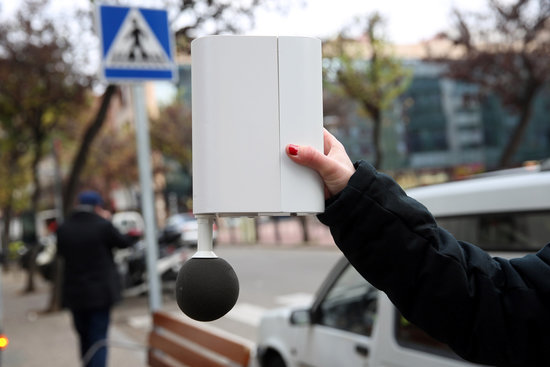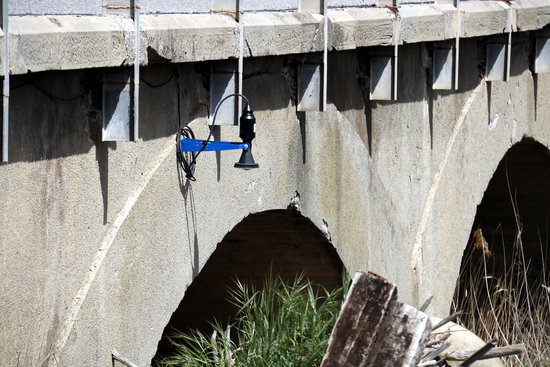Catalonia’s Internet of Things network working to make life better for city dwellers
Sensors collecting data across the country can help mitigate the impact of would-be social problems

As we begin the new decade, looking back ten years and considering the level of technology we had then and comparing with what’s in use daily today can serve as a useful indicator to the extent of how far we can develop beyond what we can even imagine.
The world was only just introduced to the third generation iPhone, which still had the rounded edges, in keeping with the feel of the old iPod Touch. The phone could hold 16GB of files and apps, a figure dwarfed by the cloud storage available nowadays.
We’ve gone from having to select which songs or albums we want to keep in our limited storage, deleting whichever you hadn’t listened to in a while, to now having practically every song ever recorded streaming into your ears in the click of a button.
The leaps in technology we’ve made in the past ten years have been, and continue to be, exponential and have opened up new worlds of opportunities. The coming ten years will undoubtedly have a similar impact on society and humanity, and alter the fabric of the cities we live in.
Technology grows, cities get smarter
One area of technology that has sprung to life during this past decade is the emergence of smart city technology, which comes in various different forms and functionalities, but ultimately share the same goal of improving how cities operate and serve their inhabitants.
Cities can use information and communication technology to improve efficiency and reduce costs in aspects such as energy, transport, and utilities. This is the challenge for smart cities, using developing technology and the Internet of Things to make life better for the people living there, and Catalonia is at the forefront of these developments.
The term “Internet of Things” simply refers to objects that have internet connection, and that can communicate via that connection. It is commonly understood in domestic situations, a person’s watch, fridge, or central heating system, or else in public situations, sensors that collect and transmit data.
Barcelona, like all cities, generates a lot of data every second of every day. This data can come from daily life that is constantly happening in every urban area: the flow of traffic, electricity usage, changes in air quality, to name just a few examples.
Across the city there are dozens of different types of sensors, which have only been developed in recent years, collecting this data. From microphones built into busy public squares, motion sensors detecting the speed and quantity of traffic on the main roads, and gas-detecting sensors determining how clean or dirty the air is.

Mapping Barcelona’s air quality
Leonardo Santiago, the Chief Technology Officer and co-founder of Bettair Cities, a company that specializes in mapping urban air pollution through a network of sensors and a digital platform to analyze the results, explains to Catalan News that their hardware can measure up to six different gases and suspended particles, PM2.5 and PM10. The same units can also detect noise pollution, so the one device out in the city can collect an array of different data.
This data then informs city planners, gives them a more accurate picture of what is happening in the area. This information then helps them make better decisions when it comes to city infrastructure, and improve citizens’ lives when it comes to things like reducing noise, improving air quality, and managing the flow of people and traffic in a more intelligent way.
Big data, big possibilities
Santiago gives an everyday example of how people benefit from the results of what this technology can offer. He explains that people practically every day use “traffic forecasts now, for example when you use Google or Waze, they let you know when it’s time to go, otherwise you’re going to be late.”
Google also relies on GPS data to offer this service, but initiatives backed by governments or city halls can offer the same service.
Taking the example of traffic flow, by collecting large banks of data over years, analyzing this data can give decision-makers a good idea of when peak traffic times occur and when things are quieter.
By cross-referencing traffic data with other data, such as weather patterns, or even social events such as concerts taking place which show abnormally peaked traffic patterns, it becomes easier to understand how cities move, when, and why. Once this is understood, intelligent traffic routes can be designed to make the flow more efficient and safe for everybody using the road.
Centralizing these data collections and analyses in local government can facilitate the process of cross-referencing the data, which is the point at which this information really comes to life.
Ten years ago none of these sensors existed, but now they’re giving city planners and officials vital information about how to make the city a better place to live.
Barcelona world example
Barcelona is a world leader in this field. Their open source platform for sensor data, Sentilo, has already been adopted by other cities, from Reus and Terrassa in Catalonia to as far as Dubai. With continued investment in research and development the city’s Internet of Things network -- as well as the possibilities they bring -- will be completely unrecognizable in ten years’ time.
The Barcelona square of Plaça del Sol in the neighbourhood of Gràcia is well known for late night, outdoor parties, which has been a pain for the residents living nearby. A couple of years ago, the city installed noise sensors, and detected peaks of up to 100 decibels, way beyond the World Health Organization’s recommended limit.
Now these sensors help keep noise down at night, giving neighbours a good night’s sleep again.
Proactive decisions to mitigate would-be problems
This is an example of the technology’s use in a reactive way. With advancements and developments coming soon, cities will be able to take action before something becomes a problem. The more relevant data the decision-makers have, the more informed their decision will ultimately be.

“What if we could mitigate pollution before it actually happens?” asks Leonardo Santiago. “This is where the technology is going to be in a couple of years,” he explains.
“That’s what we want to provide, a tool with real-time data to better understand pollution. And when it comes to better understanding pollution you can actually find a solution to tackle pollution and mitigate it in the most cost-effective way, so at the end it’s a win-win.”
The town of Tàrrega recently introduced a set of sensors that track the state of the town’s river, the Ondara. The equipment is capable of detecting floods and alerting authorities and citizens about abnormal river levels.
The town suffered a major flood in 2015, when heavy rainfall caused the river’s banks to burst, doing damage to the town worth around €220,000.
The mayor of Tàrrega, Rosa Maria Perelló, emphasized the importance of the devices because often, floods are "sudden" and that’s why it is necessary to act in a proactive way with emphasis on "prevention" of damage.
Perelló also emphasized that the value provided by the sensors is available to "all territories which may be affected by the Ondara river."